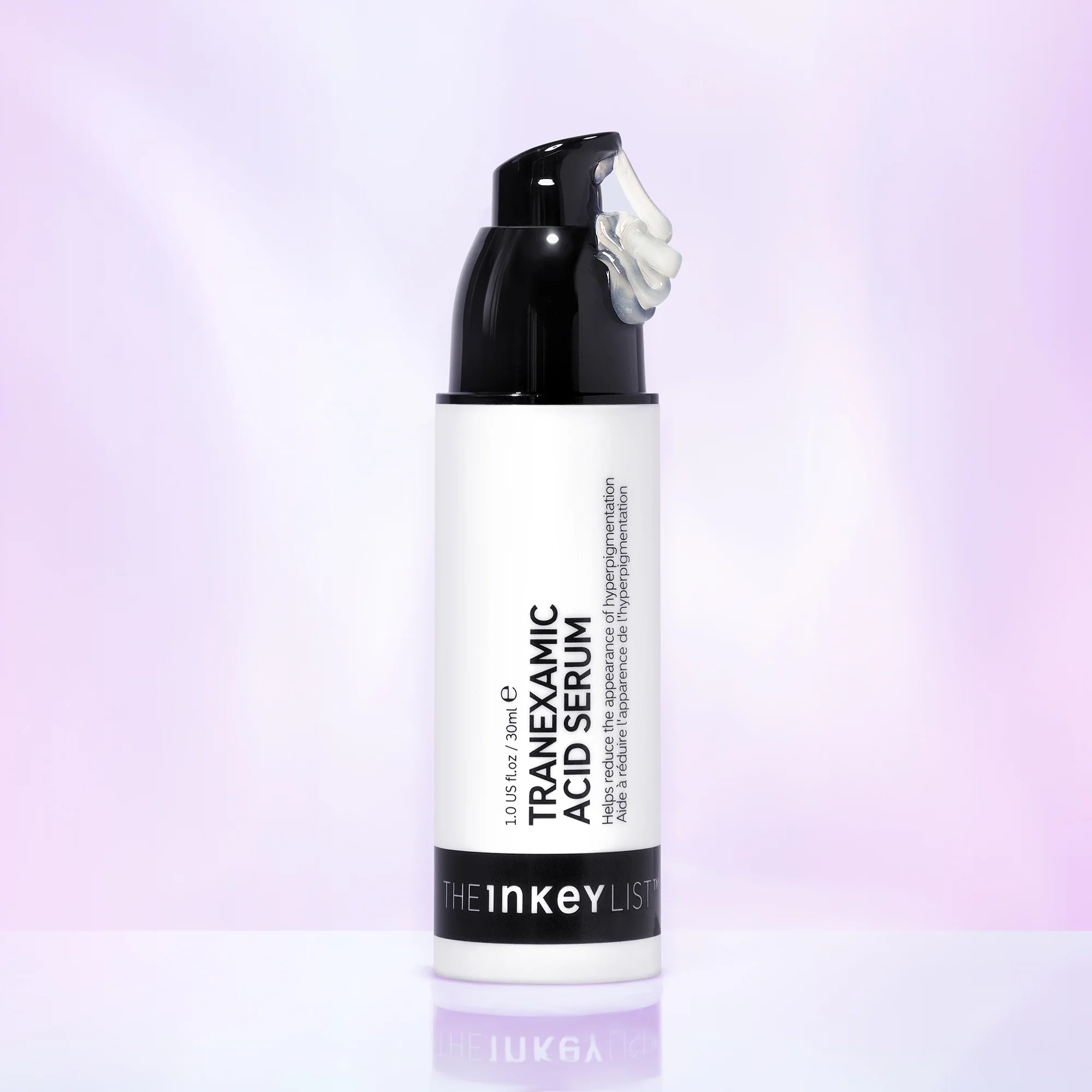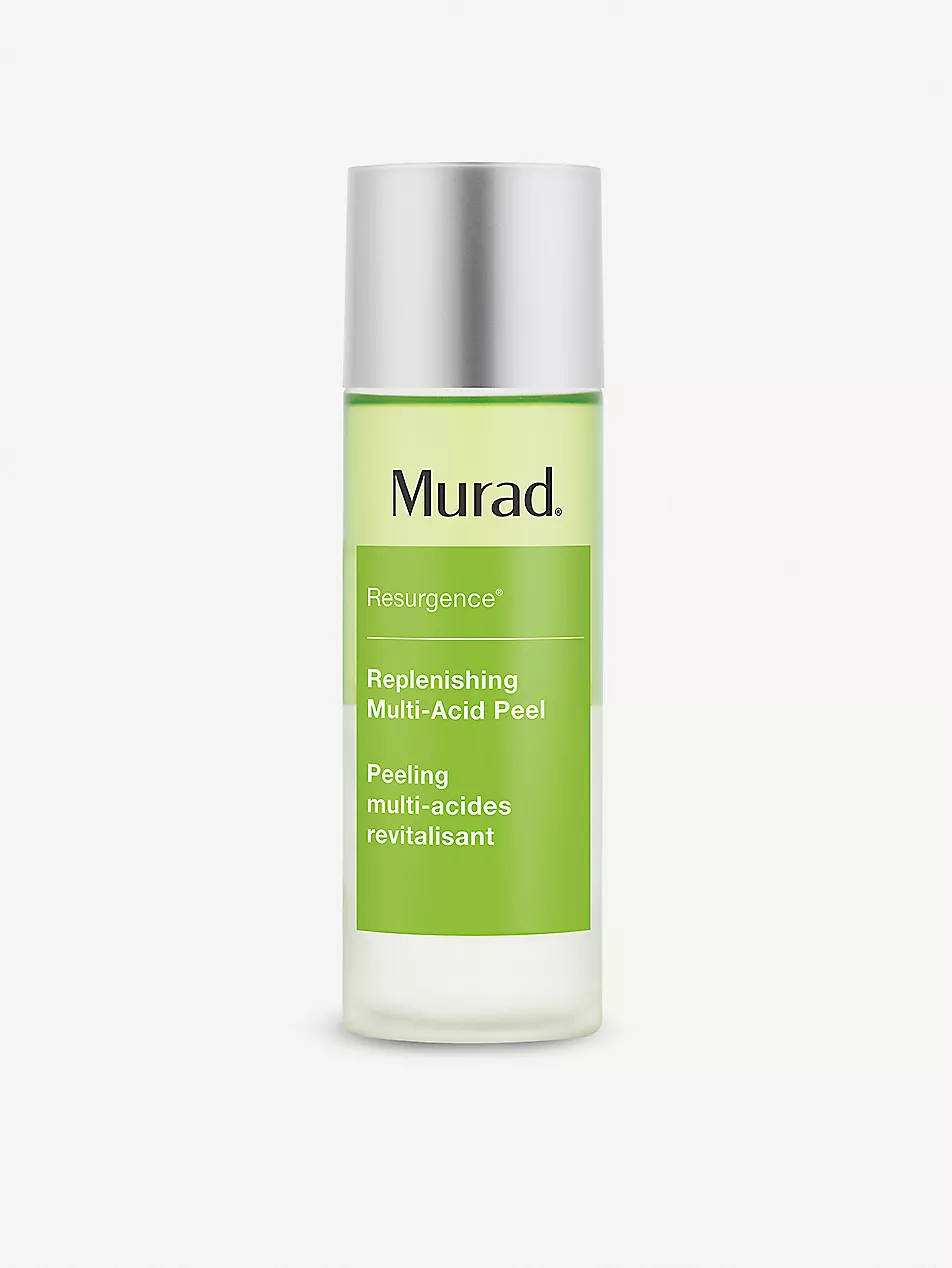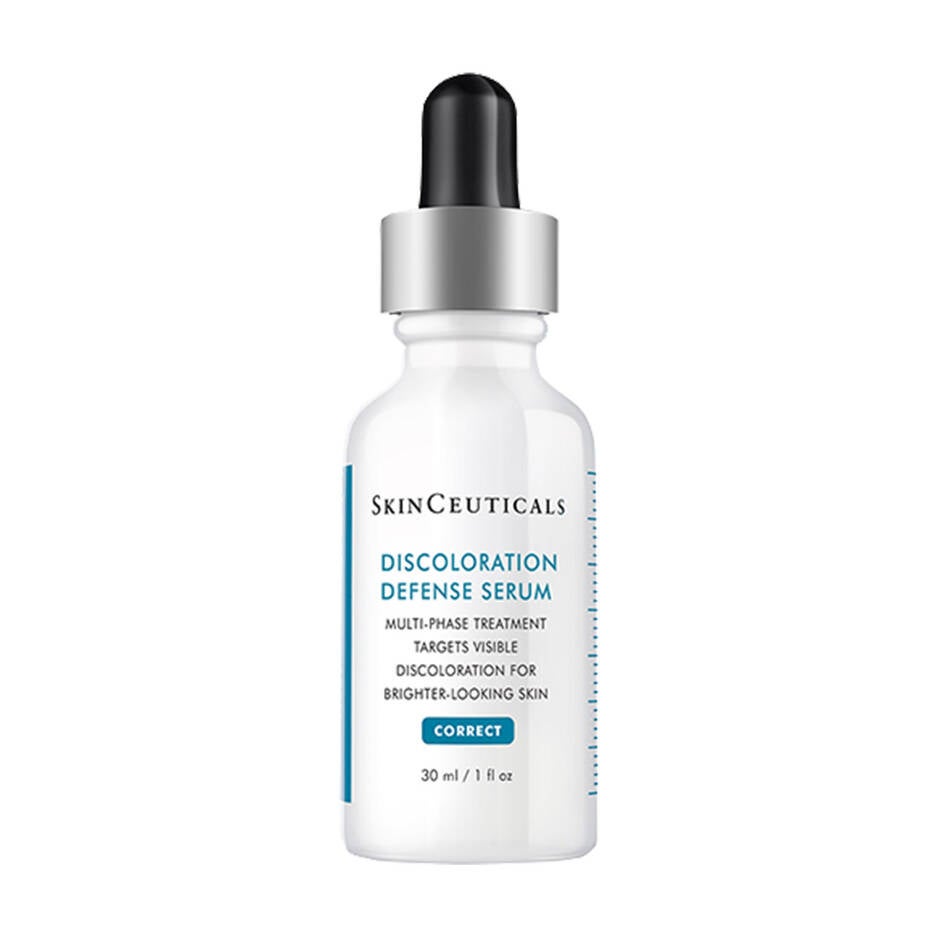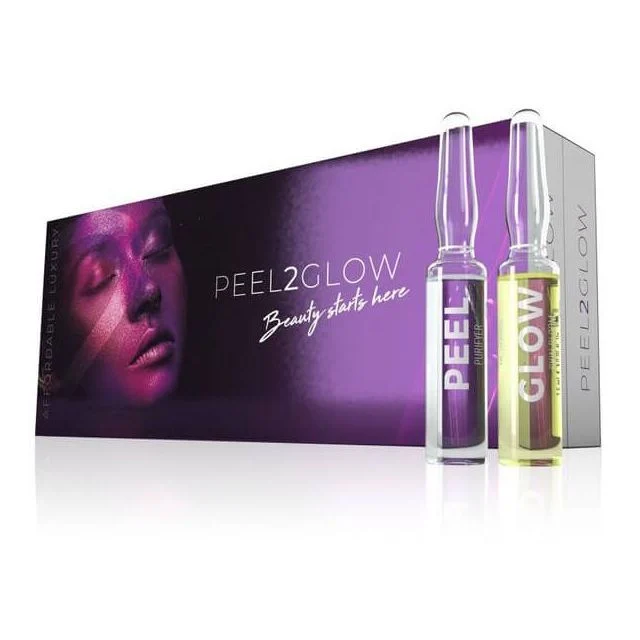Tranexamic Acid Tackles Pigmentation & Dark Spots, Fast
Photographed by Caroline Tompkins.
From niacinamide to azelaic acid, there are countless buzzy skincare ingredients that have burst onto the beauty scene in the past few years. Right now, it seems everyone is talking about tranexamic acid. Touted by dermatologists, facialists and brand founders as one to watch, tranexamic acid's ability to fade dark spots, minimise pigmentation left behind by acne scars and help with skin discolouration as a result of melasma is not to be sniffed at.
Ahead, we asked three trusted skin experts to divulge all they know about tranexamic acid, including all the main benefits and exactly how to use it.
AdvertisementADVERTISEMENT
What is tranexamic acid?
"Traditionally, tranexamic acid is actually a drug which has been used in surgery to stem bleeding, but recent studies show that it has a positive impact on things like melasma (irregular brown and grey-brown areas of discolouration) and hyperpigmentation," says Mark Curry, skin expert and cofounder of The Inkey List. Hyperpigmentation includes the brown or red skin staining left behind by skin inflammation, such as acne, which some experts may refer to as surface acne scarring.
Consultant dermatologist Dr Anjali Mahto writes on Instagram: "Dermatologists can use tranexamic acid by injecting it into the skin or prescribing oral tablets." She notes that it is also effective in topical skincare products such as serums, which explains why you might be seeing the ingredient everywhere at the moment.
What are the benefits of tranexamic acid?
Think of tranexamic acid as a skin brightener which fades discolouration caused by melasma and hyperpigmentation.
"It prevents the appearance of dark spots by removing the excess melanin formed," says Dr Parisha Acharya at Waterhouse Young Clinic. "It has effects on skin as a whole but specifically regulates melanin overproduction." In other words, it targets the dark spots specifically. Tranexamic acid does this by blocking the hormones that cause pigment in the skin, says Curry. Dr Mahto also notes that used regularly, tranexamic acid helps minimise freckling due to spending too much time in the sun, which develops as part of the natural ageing process of the skin.
AdvertisementADVERTISEMENT
Some acids, such as glycolic acid and lactic acid, can make skin quite sensitive, but tranexamic acid works very well with other skin brightening agents like vitamin C and retinol. It is especially effective when paired with a broad spectrum sunscreen. "If you have pigmentation, then using a high factor sunscreen on a daily basis also needs to be a vital part of your routine," adds Dr Mahto.
How do you use tranexamic acid in your skincare routine?
To target skin concerns such as melasma and hyperpigmentation, tranexamic acid is effective when used topically in skincare, such as in serums and moisturisers, but frequency of application depends on personal preference.
"Start by using tranexamic acid once a day initially," says Dr Acharya. "Once you develop tolerance, move to twice daily use," so both morning and evening. "You can use it after a vitamin C serum and before SPF in the morning, and after your retinol in the evening to get the best penetration," Dr Acharya adds.
Curry says tranexamic acid works very well with usual super-actives such as vitamin C, niacinamide and even exfoliating acids, such as glycolic acid and salicylic acid. "However," he advises, "as with all skincare, approach tranexamic acid with care until you know what your skin can and cannot take."
R29 rates The Inkey List Tranexamic Acid Night Treatment, £13.59. Teamed with brightening vitamin C, the gel-serum gets to work on dark spots when used regularly as part of an evening routine.
AdvertisementADVERTISEMENT
Also try Murad Replenishing Multi-Acid Peel, £69, which boasts tranexamic acid as well as exfoliating acids like glycolic acid and salicylic acid to unclog pores and reduce surface scarring or red marks. Use this after cleansing in the evening and follow with moisturiser. Be sure to wear SPF during the day, as exfoliating acids can make skin sensitive to sunlight.
Dr Acharya recommends SkinCeuticals Discoloration Defense Serum, £85, which enlists 1.8% tranexamic acid to fade blemish spots and evens out skin tone, and Peel2Glow Skin Bloom Treatment Kit, £33.
How is tranexamic acid different from glycolic acid and salicylic acid?
"They all contain the word 'acid', but the way they work varies greatly," says Dr Acharya.
Unlike glycolic acid, lactic acid and salicylic acid, tranexamic acid is not considered an exfoliating acid. "Its powerful anti-inflammatory action disrupts what is responsible for excessive melanin production and pigmentation," which appears in dark spots on the skin. Exfoliating acids simply get rid of the dead cells from the outer layer of skin.
Are there any side effects of using tranexamic acid?
Dr Mahto mentions that tranexamic acid used in topical skincare is safe and is tolerated well by all skin types.
Dr Acharya suggests conducting a patch test if you are prone to sensitivity and reactions when using new products. While she has no specific precautions for using tranexamic acid topically, she hits home the importance of wearing SPF and avoiding the sun if that is the cause of your pigmentation.
At Refinery29, we’re here to help you navigate this overwhelming world of stuff. All of our market picks are independently selected and curated by the editorial team. All product details reflect the price and availability at the time of publication. If you buy or click on something we link to on our site, Refinery29 may earn commission.
AdvertisementADVERTISEMENT










